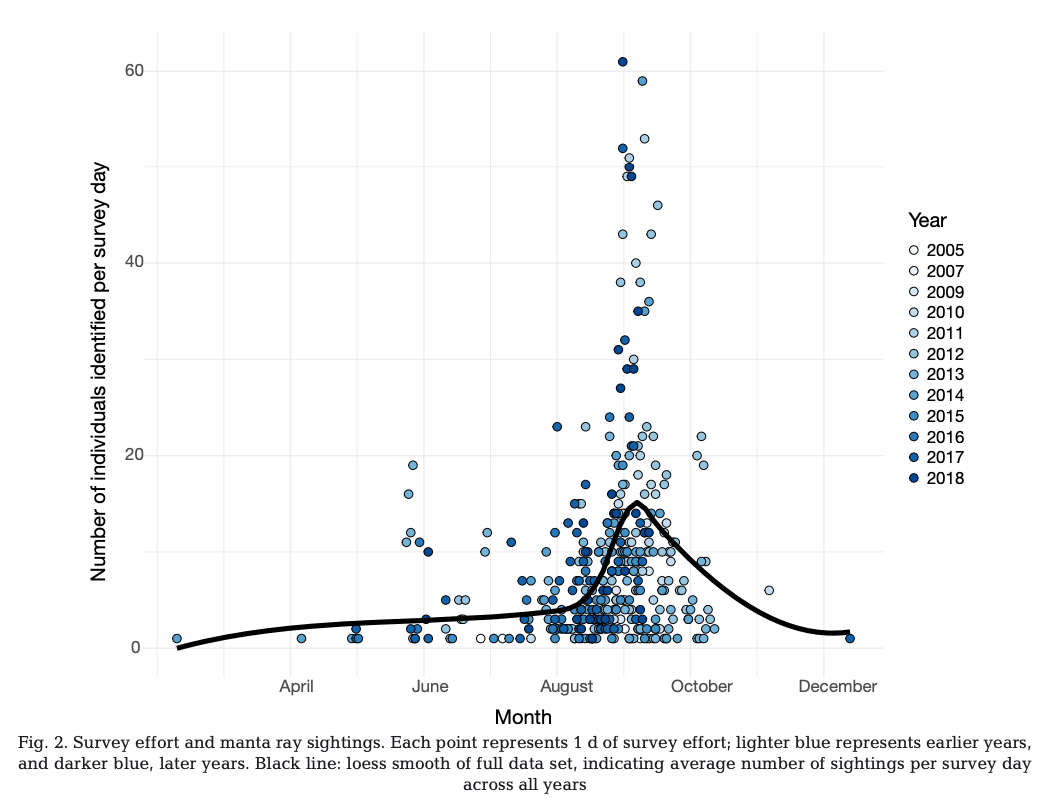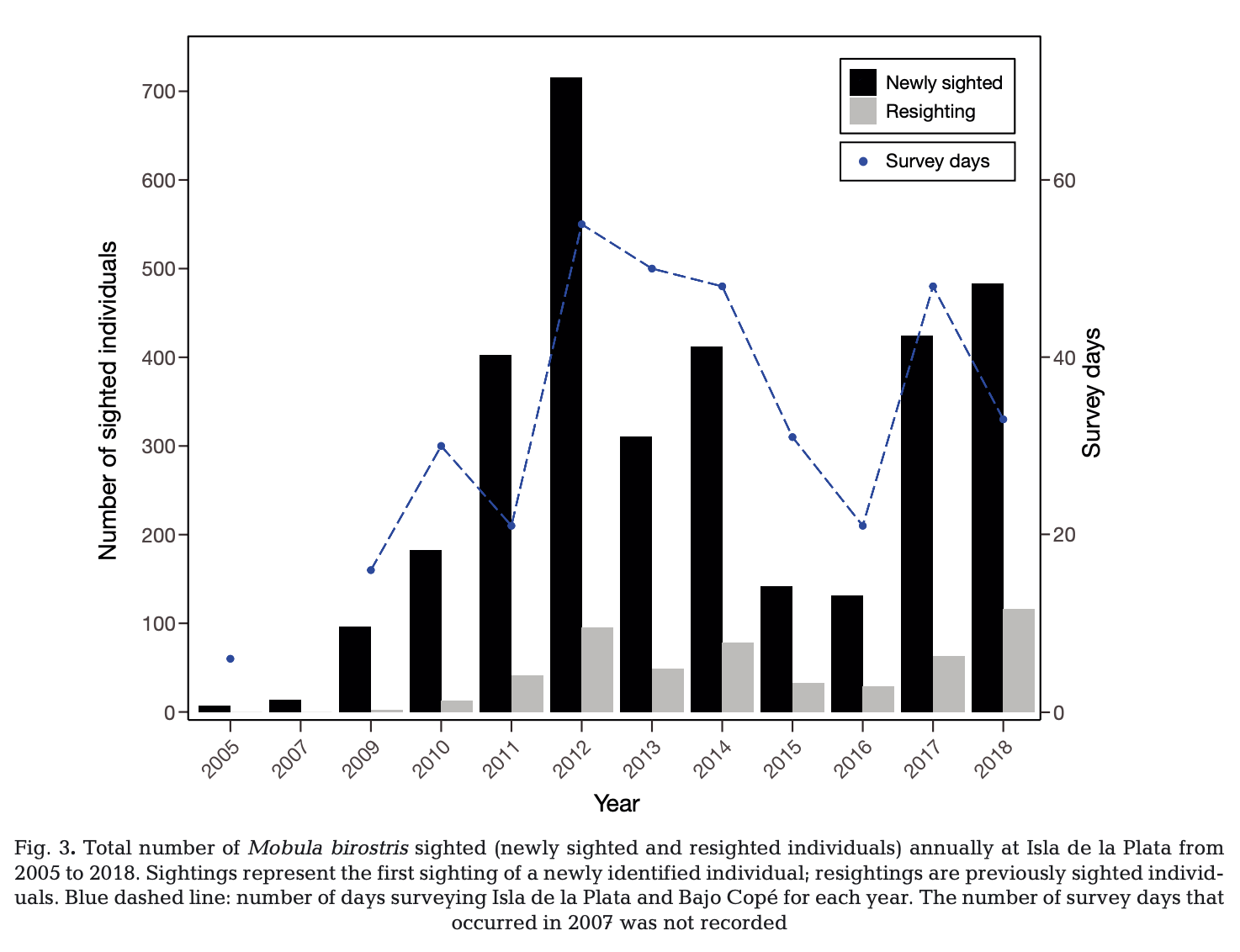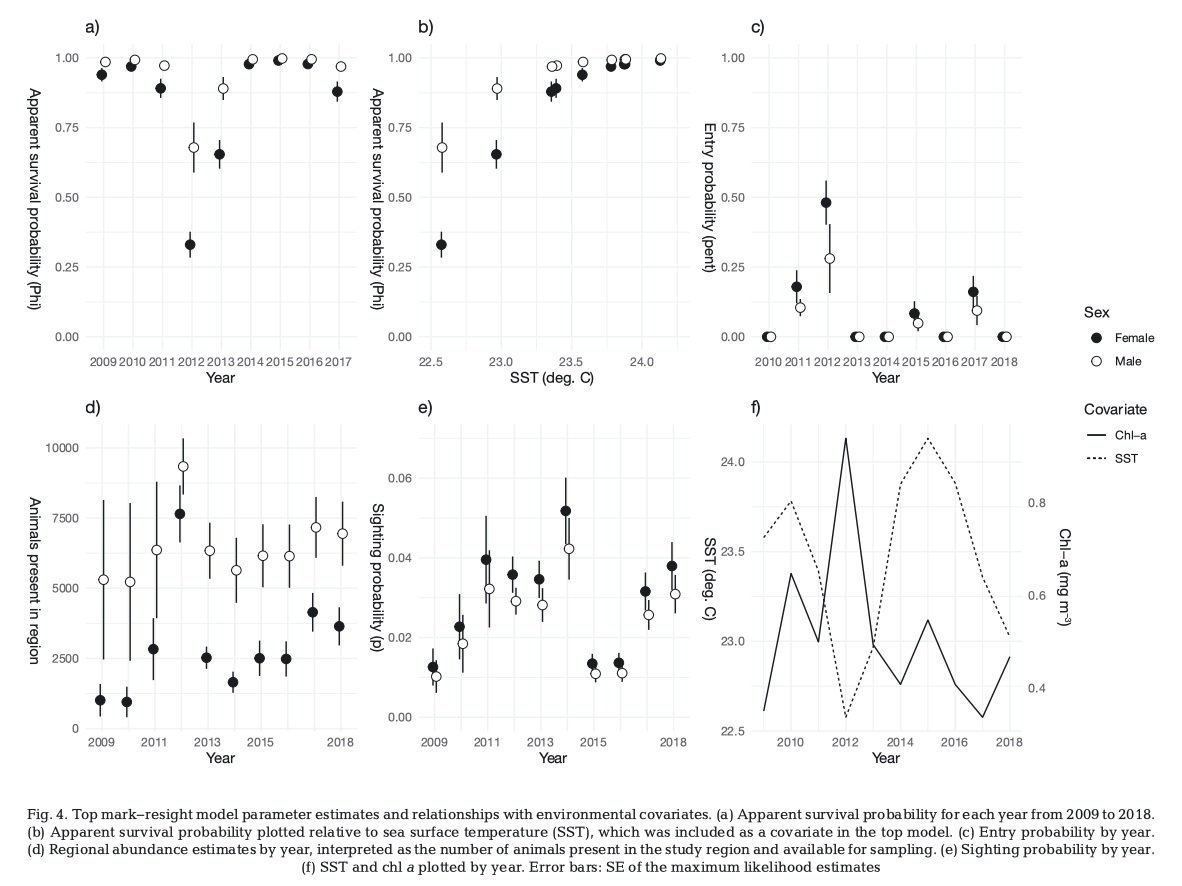Demographics and dynamics of the world’s largest known population of oceanic manta rays Mobula birostris in coastal Ecuador
November 2022
Kanina Harty, Michel Guerrero, Anna M. Knochel, Guy M. W. Stevens, Andrea Marshall, Katherine Burgess & Joshua D. Stewart
Keywords: Population modelling • Mark-resight • Photo-identification • South America




Summary: This study investigates the demographics and population size of oceanic manta rays at two sites in Ecuador using photo-ID data. The population was found to be biased towards males, and only 12.9% of individuals were resighted. Environmental predictors such as sea surface temperature and chlorophyll a were important factors in estimating population parameters. The estimated superpopulation size was 22316 individuals, with the population in coastal Ecuador and Peru likely the largest in the world.
Abstract
“Information on the life history and demographics of oceanic manta rays Mobula birostris remains scarce. Using photo-ID data, we describe the demographic structure, population size, and possible environmental drivers of the seasonal occurrence of M. birostris at Isla de la Plata and Bajo Copé, Ecuador. We identified a total of 2803 individuals from 3322 encounters over a period of 14 yr (2005-2018). The population sampled at these sites was significantly biased towards males (sex ratio 1F:1.67M) and only 12.9% of individuals were resighted. We used mark-resight models to estimate demographic parameters of the population, including superpopulation size, survival probability, entry/recruitment probability, and detection probability. We also evaluated how these parameters were related to environmental predictors, such as El Niño-Southern Oscillation (ENSO), sea surface temperature (SST), and chlorophyll a (chl a). Mark-resight analyses indicated that SST, chl a, time, and sex, but not ENSO, were important predictors of estimated population parameters. Entry probability peaked in 2012, which coincided with the lowest SST and highest chl a concentrations. The best-fit mark-resight model estimated a superpopulation size of 22316 individuals, with annual estimated abundances of 949-7650 females and 5226-9340 males. Localised sampling of this highly mobile species limits the interpretations of mark-resight analyses, but provides lower bounds for total abundance that indicate the population of M. birostris in coastal Ecuador and Peru is likely the largest in the world.”
Infographics
Author Affiliations
The Manta Trust
Fundacion Megafauna Marina del Ecuador (Proyecto Mantas Ecuador)
Galapagos Science Center, Universidad San Francisco de Quito and University of North Carolina at Chapel Hill
Marine Megafauna Foundation
Marine Mammal Institute, Department of Fisheries, Wildlife and Conservation Sciences, Hatfield Marine Science Center, Oregon State University
Funded by
Save Our Seas Foundation
Foundation Ensemble
The Rufford Foundation
Ray of Hope Expeditions


